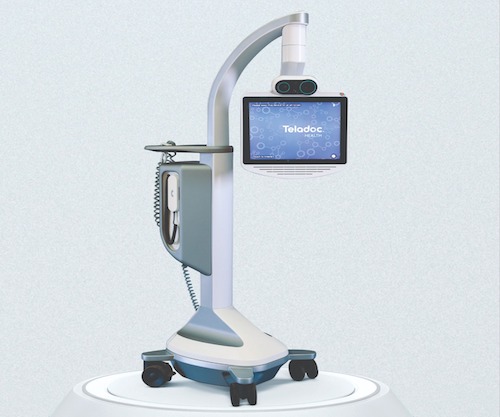- “Meenakshi Mission Hospital is the first healthcare institution in India to deploy advanced telehealth technology. It acquired 16 Teladoc Health Vita robots last year in August when the pandemic was raging and close contact between doctor and patient was not advisable
- The technology helped curb the spread of Covid infection by enabling remote diagnosis and monitoring of patient parameter. They acted as force-multipliers for the hospital which had 250 dedicated Covid beds but the number of doctors who could treat them was limited”
Madurai/Chandigarh, November 09, 2021:
India’s largest and only installation of advanced virtual care at Meenakshi Mission Hospital & Research Centre (MMHRC) in Madurai proved to be a gamechanger in Covid times by remotely connecting more than 40,000 patients, including both outpatients and inpatients, to doctors for treatment in the thick of the pandemic, significantly helping curb the spread of Coronavirus infection and improving health outcomes.
This is the first time that a hospital in India has deployed state-of-the-art virtual care robots that are being used in six of the world’s top ten hospitals. MMHRC acquired 16 self-driving robots from the US-based Teladoc Health, the global leader in whole-person virtual care in August last year to enable doctors to provide virtual care to patients when the Covid pandemic was raging.
Said Dr. S Gurushankar, Chairman of the 1,000-bed Meenakshi Mission Hospital & Research Centre at Madurai: “We decided to deploy Teladoc Health technology to enhance the diagnostic abilities of doctors and connect them with patients remotely. These devices empowered our doctors to treat patients anywhere, anytime by acting as their third eye, through which they could remotely access all parameters of patients. Since August last year, over 40,000 inpatients and outpatients have been treated at our hospital during and after the second wave of Covid using these robots. Over 3,500 of these were Covid-positive patients admitted to the Covid, ICU and Emergency wards at our hospital. We managed to prevent thousands of potential cases of Coronavirus infection which may have occurred had there been face-to-face contact between patients and doctors in the critical months when the pandemic was at its peak. This helped save lives and reduce the burden on the healthcare infrastructure.”
Dr. S Gurushankar added: “These robots can collect and process data from other diagnostic equipment and present it to doctors to help them make clinical decisions. They enable as many as six specialists to come together remotely at the same time to treat and monitor a patient suffering from multiple complications. Specialists can cross-consult each other regarding a patient, and even consult remotely with doctors located in other countries like the US and the UK. At our hospital, we have integrated these robots with our USG, ECHO, Cathlab and other diagnostic devices to monitor patient parameters. They are also connected with our Picture Archiving and Communication System (PACS) through which doctors can pull out the patient’s diagnostic reports. In the isolation ward, the patient’s attendants can check on them using these robots.”
Said Dr. Shayan Vyas, Senior Vice President, Teladoc Health, US: “Advanced virtual care increases the efficiency and independence of clinicians, while simultaneously improving safety measures for both clinicians and patients. With this technology clinicians can visually examine patients remotely, which is immensely valuable during Covid-19 as it allow doctors to care for patients without putting themselves at risk or using PPE.
He added: “Virtual care acts as a ‘digital front door’ providing a guided journey through the healthcare system. It expands capabilities of hospitals, removes geographical barriers, and enhances collaboration by doctors across specialties. It bridges the physical gap between healthcare professionals and patients, particularly in rural and underserved communities, and bring specialist expertise to areas lacking it. It reduces the need for patient and clinician to travel and increases the number of patients a single doctor can see in a day. In near future, we will see this technology flow from episodic, acute care to ongoing monitoring of chronic conditions, wellness and prevention, mental health, and more. Advanced, whole- person virtual care can be a transformative and equalizing force in healthcare access in an underserved country like India.”
Teladoc Health robots are considered the world’s most advanced robotic telemedicine platform. These robots have been installed in 6 of the 10 world’s best hospitals including Mayo Clinic, Cleveland Clinic, Massachusetts General Hospital, The Johns Hopkins Hospital, Charite Universitatsmedizin (Berlin), and Sheba Medical Centre (Israel).
healthysoch







